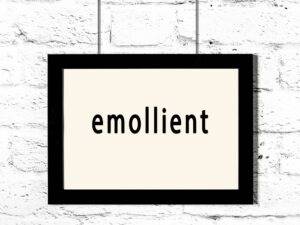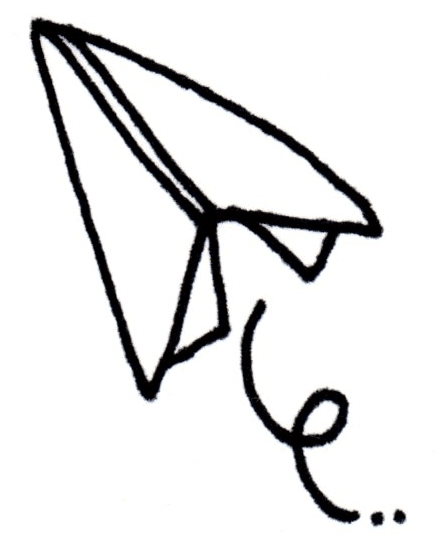Using emollients for eczema: A beginners guide



If you have just been told by your doctor or health care provider that your little one has eczema, the first thing you will be prescribed is an emollient. These are the mainstay for the alleviation and prevention of eczema symptoms. There is a huge range of emollients available for eczema – both prescription and over the counter. It can be a minefield as (in our experience) there is only a 50:50 chance that any given cream will actually work. And if one does work, this may be seasonal or time-limited. For parents with eczema children, it is the ultimate quest for the holy grail and we know how frustrating it can be. We hope in writing this we make your own search a little easier!
What is an emollient and why has my child just been prescribed one?
Emollients are medical moisturisers – they are unperfumed and do not have any anti-ageing properties. They are the first line of therapy for all dry skin conditions and using them as part of a daily routine can soothe, moisturise and protect the skin helping to reduce eczema flares.
As we know, dry skin is itchy skin. Emollients soothe skin and relieve the itch by forming an oily layer over the skin surface which traps water beneath it. This is known as the occlusive effect. When the skin’s barrier function is restored in this way, irritants, allergens and bacteria have a much harder time penetrating it.
There are lots of different types of emollients for eczema. The occlusive effect varies meaning the different types of emollient are suitable for different situations. Some formulations contain humectants that can extent the occlusive effect.
Types of emollients
The leave-on emollients are available as lotions, creams, gels, sprays and ointments to be applied directly to the skin.
-
Lotions
Lotions contain more water and less fat than creams – the high water content means that they need to contain preservatives which, very occasionally, can cause sensitivity. They spread easily and are cooling but do not effectively moisturise very dry skin as they are not thick enough to repair the skin barrier. The have a light occlusive effect, meaning it typically only lasts for a hour or two. Usually used for maintenance of dry skin to prevent eczema reoccurring. Also useful for hairy areas (e.g. when eczema goes into the hair line), weeping eczema or fast absorption in a hurry. -
Creams
Creams contain fat and water and are light and cool on the skin. Easy to spread over sore weeping skin and not as greasy as ointments which makes them easy for daytime use. May need to contain preservatives due to the water content. These have a stronger occlusive effect than lotions (3-4 hours) but still need to be applied liberally and frequently to repair the skin barrier and prevent further dryness. Humectant creams contain natural moisturisers like urea and glycerine and need applying less frequently (every 6-8 hours). Typically used for mild and moderate eczema. -
Hydrating gels
Hydrating gels are relatively light and non-greasy, despite having quite a high oil content. Again they should be applied every 3-4 hours unless they contain humectants, in which case it’s every 6-8 hours. Typically used for mild and moderate eczema. -
Sprays
Sprays are particularly useful for treating hard to reach areas or areas that are super sensitive to touch. These emollients have oils held in suspension with a volatile carrier (like liquid paraffin or silicone) which evaporates on application. These emollients necessarily have more ingredients than other forms, meaning there’s more chance of an adverse reaction. -
Ointments
Ointments have the highest fat content, as a result they are often stiff and greasy. However, they are very effective at holding water in the skin and repairing the skin barrier. Useful for very dry, thickened areas and ideal under dry or wet wraps or ScratchSleeves at night time. They may need warming up before use. Ointments should not be used on weeping eczema, mainly because they just won’t stick to damp skin. Ointments have the highest occlusive effect but can also feel heavy of claggy on the skin. -
Bath oils and additives
Bath emollients are added the bath water with the aim of coating the skin with a film of oil to trap moisture. There isn’t any solid evidence that they particularly help with eczema and may be more hazardous that they are worth – they make the bath or shower very slippery. They can be useful for children who really dislike creams or sprays. They aren’t available on prescription in the UK but you can get a similar effect by adding a dollop of your regular cream or ointment to the hot water as you run the bath. -
Soap substitutes
These are emollients designed specifically to lift grease and grim from the skin and are very similar to make-up removers. It takes a while to get used to using a soap substitute as they don’t foam but they are still very effective at removing dirt. You can also use creams and ointments as soap substitutes.
Please note that you must not put your fingers into pots of leave-on emollients as there is a risk of contamination and spreading infection. Opt for pump dispensers or use a teaspoon to decant ointment or cream from a tub into another clean container before applying to the skin.
Added ingredients
Some emollients may contain the following added ingredients.
- Anti-itch – lauromacrogols is an local anaethestic which helps to relieve itch (found in E45 itch relief cream). Makes a big difference to comfort and sleep in our experience!
- Humectants – propylene glycol, lactic acid, urea and glycerol – draw water into the epidermis from the dermis (skin layer below). Urea softens the skin and enables the emollient to penetrate deeper but stings for a couple of minutes after application and therefore may not be popular with younger children.
- Antimicrobials – found in some leave-on creams, lotions and assorted wash products. An agent that destroys bacteria and inhibits their growth. May cause sensitivity if used for a long time.
- Ceramides can help to re-establish the balance of fats necessary for the skin barrier to function effectively.
Choosing an emollient for eczema
There are many, many emollients available both over the counter and on prescription. They will all have slightly different formulations and suit different people. This means that going on someone else’s recommendation a good way to find the most effective emollient for your child. It really is a case of trial and error.
In the first instance, the easiest approach is to go with whatever your GP prescribes. Here in the UK, NHS prescriptions are free for children so you can save yourself time and money. The first line emollients for eczema are usually based on mineral oil and will be effective for a good proportion of children. The important thing to realise is that unless you tell them otherwise, your GP will assume that the prescribed emollients are working. If you don’t see a marked improvement in dryness and inflammation in the first week, you’ll need to go back the doctors and ask for a different brand.
- The best emollient is one your child can get on with and will therefore use regularly.
- Some children find a lighter emollient during the day and warmer months is preferable, whilst a greasier one is better in the winter or at night.
- The fewer ingredients, the less chance of an adverse reaction.
- To reduce the risk of future food allergies, avoid ‘food’ ingredients like peanut oil (also known as groundnut or arachis oil) until these foods are part of you child’s regular diet.
- For non-prescription emollients, patch test new products on a small patch of unaffected skin and wait 48 hours before putting it over eczema sore skin.
Our first child got on really well with the Diprobase prescribed in our first ever eczema related GP appointment. Our second child hated the stuff. It took a while to find but in the end we settled on the Salcura Bioskin spray for her.
Jae – founder of ScratchSleeves
Many emollient brands have broadly similar formulations. On this basis, you can probably narrow down what will or won’t work for you based on these similarities. For example, Eucerin, Aveeno and Aproderm are all wheatgerm based. So if one of them doesn’t work for your child, the likelihood is the others won’t either.
| Key ingredient | Brands containing the ingredient |
| Mineral oil | Diprobase, Epaderm, Cetraben, Aquamol, Hydromol, Zerobase, Excetra |
| Oatmeal | Aveeno, Aproderm, Eucerin, Epimax |
| Vegetable oil | My Trusty Skincare, Cataphil, Restoraderm |
| Aloe vera | Skin Salve, Forever, Suvex Soothe |
| Lanolin | Ducubal, E45 Cream, Zerocream |
Tips for applying emollients
It can be time-consuming and tedious to apply emollients, however, they really are the cornerstone of treating eczema. Here are some tips to help:
- Make sure your hands are clean before applying emollients to reduce the risk of skin infections
- Use your emollient frequently. Every few hours is ideal but twice a day is an absolute minimum. To give you some idea, you should be using 250g a week of emollient on your eczema child.
- Apply gently in the direction of hair growth – do not rub vigorously and this can block hair follicles, trigger itching and overheat the skin.
- If you dot blobs of emollient on all areas of the body you won’t miss any spots.
- Keep using your emollient alongside any other treatments that your doctor prescribes. Do not stop, just use them in conjunction.
- A thick layer of greasy emollient before swimming forms a protective barrier. Remember your little one will be extra slippery!!
- Continue use of emollients even when eczema isn’t flaring. You may be able to reduce the frequency.
- Apply emollient to all skin, not just areas affected by eczema.
- Keep emollient soaked clothing and bedding away from naked flames. While emollients are not flammable in themselves, fabrics with emollient residues are more like to ignite and burn quickly, similar to a candle wick.
Some emollient tips from ScratchSleeves
Here are just a few little tips about applying emollients learned over the years from personal experience with love from our itchy family to yours.
- Put emollients on your baby or child on a change mat on the floor. Changing tables are hazardous with slippery wriggling mini people!!
- Keep lots of muslins to hand – for wiping up spills, smears and your hands!!!
- Make sure your hands are clean and dry before picking your child up out of the bath or shower – ideal is to have your hands under their arms and your thumbs looped over their shoulders
- Have a clear area waiting to put them when you lift them out – the less time this takes to reach the better!
- Keeping lighter emollients in the fridge provides some relief for hot and itchy little bodies.
- If you have round doorknobs, don’t close the doors. They are nigh on impossible to grip properly with greasy hands.
Further reading
Here at ScratchSleeves, we don’t just share our experiences of bringing up an eczema child and favourite allergy-friendly recipes, we also manufacture and sell our unique stay-on scratch mitts and PJs for itchy babies, toddlers and children. We now stock sizes from 0-adult years in a range of colours. Visit our webshop for more information.
The Calm Skin Guide
Love our blog? It's also available in book format with:
- First hand accounts from parents & medical professionals
- Easy navigation
- Comprehensive index
- Additional material
Signed copies available at no extra cost
Written by:
Reviewed by:
Interesting article? Don't keep it to yourself...
Read next...
You may also find helpful...
Quick buy


Multi Buy Discount

Spend between £30 - £60 and save 5%
Spend between £60 - £120 and save 10%
Spend over £120 and save 15%
Discount automatically applied at checkout
No Quibbles Guarantee

ScratchSleeves abide by a no quibbles guarantee.
Free UK Postage

Free packing and postage on all UK orders. For overseas orders to Europe postage is from £3.50, to USA is £6.50 and to the rest of the world, from £3.75.







